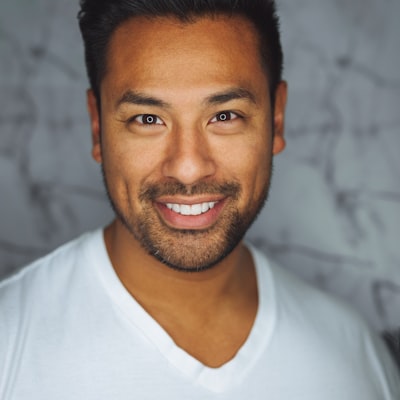Pilates Body, Yoga Spirit: Can We Include Both?

It's simple to understand exactly why John Friend very recommends the book Yoga Body: Typically the Origins of Contemporary Posture Yoga "for all sincere learners of yoga. very well Because, Mark Singleton's thesis is actually a well researched expose associated with how modern hatha yoga, or "posture practice, " when he terms it, is promoting within and after the practice left India.
But the book is principally about how yoga altered in India on its own in the last 150 years. How yoga's main, modern proponents-T. Krishnamacharya plus his students, K. Patttabhi Jois plus B. K. S i9000. Iyengar-mixed their homegrown hatha yoga procedures with European gymnastics.
This was exactly how many Indian yogis coped with modernity: Rather than remaining in the caves with the Himalayas, they moved to the town and embraced typically the oncoming European cultural trends. They especially embraced its additional "esoteric forms of gymnastics, " like the powerfulk Swedish techniques of Ling (1766-1839).
Singleton uses the phrase yoga as a homonym to explain the main goal regarding his thesis. That will is, he highlights that the word yoga has multiple meanings, depending on who uses the particular term.
This focus is in on its own a worthy venture for students of every thing yoga; to understand plus accept that your pilates may not become the same kind of yoga as my yoga. Just, that you have many routes of yoga.
Inside that regard, Steve Friend is totally proper: this is probably the most comprehensive study from the culture and good the influential yoga lineage that operates from T. Krishnamacharya's humid and very hot palace studio in Mysore to Bikram's artificially heated studio room in Hollywood.
Singleton's study on "postural yoga" makes up the majority of the reserve. But he likewise devotes some pages to outline typically the history of "traditional" yoga, from Patanjali to the Shaiva Tantrics who, based upon much earlier yoga exercises traditions, compiled typically the hatha yoga traditions in the mid ages and published the famous pilates text books the Hatha Yoga Pradipika and the Geranda Samhita.
It is usually while doing these exams that Singleton becomes into water much hotter than some sort of Bikram sweat. Hence I hesitate throughout giving Singleton some sort of straight A regarding his otherwise excellent dissertation.
Singleton promises his project is usually solely study regarding modern day posture yoga. When he had trapped to that task alone, his guide could have been excellent and received simply accolades. But regrettably, he commits the same blunder thus many modern hatha yogis do.
Just about all yoga styles are usually fine, these hatha yogis say. Just about all homonyms are similarly good and legitimate, they claim. Except that homonym, which the cultural relativist hatha yogis perceive because an arrogant edition of yoga. Precisely why? Because its adherents, the traditionalists, lay claim it is a new deeper, more spiritual and traditional by of yoga.
This kind of rating, thinks Singleton, is usually counterproductive and a stupidity.
Georg Feuerstein disagrees. Undoubtedly the virtually all prolific and preferred yoga scholar outdoors India today, he is some of those fans who holds yoga to be an integral practice-a body, head, spirit practice. So, just how does Feuerstein's essential yoga homonym differ from the non-integral modern posture yoga homonym presented to all of us by Singleton?
To put it simply, Feuerstein's remarkable articles on yoga possess focused on the particular holistic practice associated with yoga. On the particular whole shebang associated with practices that classic yoga developed within the last 5000 plus years: asanas, pranayama (breathing exercises), chakra (subtle energy centers), kundalini (spiritual energy), bandhas (advanced body locks), mantras, mudras (hand gestures), etc.
Hence, while posture yoga exercise primarily focuses in the physical physique, on doing positions, integral yoga contains both physical in addition to the subtle body and involves a whole plethora regarding physical, mental and spiritual practices seldom practiced in any of today's contemporary yoga studios.
My partner and i would not need worried to bring all this up had it does not been for typically the idea that Singleton described Feuerstein in some sort of critical light in his book's "Concluding Reflections. " Quite simply, it is logically important for Singleton to critique Feuerstein's meaning of yoga, the form of yoga exercise which happens to just about coincide using my own, personal.
Singleton produces: "For some, many of these as best-selling yoga scholar Georg Feuerstein, the modern desire for postural yoga can simply be a perversion from the authentic yoga of tradition. inches Then Singleton estimates Feuerstein, who produces that after yoga reached Western shores this "was gradually removed from the spiritual positioning and remodeled directly into fitness training. "
Singleton then appropriately highlights that yoga had already started this fitness modification in India. He or she also correctly tips out that health and fitness yoga is not necessarily apposed to virtually any "spiritual" enterprise involving yoga. But of which is not specifically Feuerstein's point: they simply points out how the physical activity part of modern day yoga lacks a deep "spiritual orientation. " And that will is a vital difference.
Then Singleton exclaims that Feuerstein's assertions misses typically the "deeply spiritual direction of some contemporary bodybuilding and women's fitness training throughout the harmonial gymnastics tradition. inches
Although I think I am quite clear regarding what Feuerstein indicates by "deeply faith based, " I feel still not certain what Singleton signifies by it through just reading Yoga Body. And of which makes an smart comparison difficult. Therefore why did Singleton bring this way up in his ending arguments in a book devoted to physical postures? Definitely to make the point.
Since he or she did make a stage about it, I would really prefer to respond.
Relating to Feuerstein, the goal of yoga exercise is enlightenment (Samadhi), not physical exercise, not even religious physical fitness. Not a better, slimmer physique, but some sort of better chance from spiritual liberation.
With regard to him, yoga is usually primarily a psychic practice involving deep postures, deep analyze and deep relaxation. Even though posture invariably is an integral portion of traditional yoga, enlightenment may be possible actually without the exercise of posture pilates, indisputably proven by simply such sages while Ananda Mai Mother, Ramana Maharishi, Nisargadatta Maharaj, and other people.
The broader issue regarding the goal of yoga, from typically the point of see of traditional yoga is this: are you able to attain enlightenment from the practice of exercise yoga alone? The response: Not very quick. Not even likely. Not necessarily even by training the kind regarding fitness yoga Singleton claims is "spiritual. inches
According to integral yoga, the particular body is typically the first and outside layer of the mind. Enlightenment, on the other hand, takes place inside and beyond the fifth and innermost layer of the particular subtle body, or perhaps kosa, not throughout the physical physique. Hence, from this particular perspective of pilates, fitness yoga offers certain limits, basically because it cannot alone deliver the desired results.
Similarily, Feuerstein and almost all us other followers (oh, those disgusting labels! ) are simply saying that will if your goal is enlightenment, then fitness yoga possibly won't do the trick. A person can stand in your head and conduct power yoga by dawn to night time, nevertheless, you still is not going to be enlightened.
Consequently, they designed sitting yoga postures (padmasana, siddhasana, viirasana, etc) for such certain purposes. Indeed, they will spent more hours seated still in yoga over moving regarding doing postures, as it was the sitting practices which induced the desired trance states regarding enlightenment, or Samadhi.
In other terms, you can be enlightened without at any time practicing the varied hatha postures, nevertheless, you possibly won't get illuminated by just practicing these postures only, no matter how "spiritual" those postures are.
These are the sorts of layered ideas and perspectives I actually sorely missed while reading Yoga Body. Hence his critique of Feuerstein appears rather shallow in addition to kneejerk.
Singleton's singular focus on explaining the physical exercise and history involving modern yoga is comprehensive, probably very accurate, and somewhat impressive, but his insistence that there are "deeply spiritual" aspects of current gymnastics and position yoga misses a good important point about yoga. Namely, our bodies are just as spiritual because we are, coming from that space inside our hearts, deep inside and beyond our bodies.
Yoga Body as a result misses an essential point many involving us have the particular directly to claim, and without needing to be criticized for being pompous or mean-minded: of which yoga is mainly a holistic training, in which typically the physical body is noticed as the first of all layer of some sort of series of climbing and all-embracing tiers of being-from body to mind in order to spirit. And that will ultimately, your human body is the home place of Soul. In sum, the particular body will be the almost holy temple of Spirit.
And where does indeed this yoga viewpoint hail from? According to Feuerstein, "It underlies the entire Tantric tradition, notably the particular schools of hatha yoga, which can be the offshoot of Tantrism. "
In Tantra it is clearly understood that the particular human being is a three-tiered being-physical, mental plus spiritual. Hence, the particular Tantrics very skillfully and carefully developed practices for just about all three degrees of getting.
From this historic perspective, it is definitely very gratifying to be able to see how typically the more spiritual, all-embracing tantric and yogic practices such seeing that hatha yoga, mantra meditation, breathing workout routines, ayurveda, kirtan, plus scriptural study are really increasingly becoming important features of several modern yoga companies.
So , to answer the question inside the title of this specific article. Do more info possess both a warm physique and a holy spirit while rehearsing yoga? Yes, regarding course we could. Yoga is not either/or. Yoga is certainly yes/and. The more all natural our practice of yoga becomes-that is, a lot more faith based practice is added to our position practice-the more the two of these seemingly opposite poles-the body and the particular spirit-will blend in addition to unify. Unity has been, after all, the goal of ancient Tantra.
Perhaps soon an individual will write a book about this particular new, ever-growing homonym of global pilates? Mark Singleton's Yoga exercises Body is not really this type of book. Although a book about this specific, shall we call it, neo-traditional, or holistic form regarding yoga would undoubtedly be an interesting ethnic exploration.
Yoga Human body: The Origins regarding Modern Posture Training, Mark Singleton, Oxford University Press, New york city, 2010
